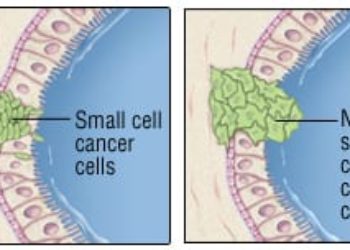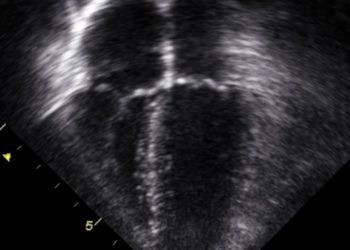Risk model-based lung cancer screening is more cost effective than current practice
1. In this comparative modeling study, risk model-based lung cancer screening strategies yielded more quality-adjusted life years (QALYs) than the 2021 United States Preventive Services Task Force (USPSTF) recommendation.
2. Risk model-based lung cancer screening strategies were more cost-effective than the 2021 USPSTF recommendation under numerous modeling assumptions.
Evidence Rating Level: 2 (Good)
Study Rundown: Risk model-based strategies for lung cancer screening select individuals based on their personal lung cancer risk, whereas categorical age-smoking strategies select individuals based on categorical age and smoking history. This comparative modeling study demonstrated that risk model-based screening strategies were more cost-effective than the 2021 USPSTF recommendation from the base-case analysis. Categorical age-smoking strategies were more costly and yielded fewer QALYs than risk model-based strategies. The highest health benefit among cost-effective strategies was seen using a 1.2% six-year threshold. An analysis using the Lung Cancer Death Risk Assessment Tool (LCDRAT) model found that the most cost-effective strategy that yielded the highest QALYs used a 1.1% six-year LCRAT risk threshold. Only risk model-based strategies with a six-year risk threshold of 2.0% or greater were cost-effective under the maximum disutility values. When including imperfect adherence rates of screening, the efficiency frontier was still composed of solely risk model-based strategies. The sensitivity analyses that included the cost of risk assessment still showed that risk model-based strategies remained cost-effective. The models used do not include various covariates that are essential considerations for real-world patients who are affected by external factors such as socioeconomic status, resource availability, health literacy, and access to care.
Click to read the study in AIM
Relevant Reading: Life-gained-based versus risk-based selection of smokers for lung cancer screening
In-Depth [comparative modeling study]: This comparative modeling study evaluated and compared the cost-effectiveness of risk model-based strategies versus the 2021 USPSTF recommendation screening program for lung cancer. Validated microsimulation models of the CISNET Lung Working Group were used to assess the cost-effectiveness of risk model-based strategies. The PLCOm2012 risk prediction model and the LCDRAT were used to assess a person’s lung cancer risk. Cost-effectiveness evaluations were based on the United States healthcare sector perspective. The results showed that risk model-based screening strategies were more cost-effective than the 2021 USPSTF recommendation from the base-case analysis. Of the 12 strategies on the cost-effectiveness efficiency frontier, the strategies with a 6-year risk threshold of 1.2% or greater had incremental cost-effectiveness ratios (ICER) of less than $100,000. The LCDRAT model demonstrated similar results to PLCOm2012 for six-year lung cancer mortality, but the screening strategy that yielded the highest QALYs used a 1.1% six-year LCDRAT risk threshold. Both risk model-based and categorical age-smoking strategies were more cost-effective for women than men. The 2.0% risk model-based strategy was estimated to screen fewer people than the 2021 USPSTF strategy (15.8% vs. 22.6%) but required half the amount of examinations. However, the lung cancer mortality reduction was 9.8% vs. 11.8%. When including imperfect adherence rates of screening, the efficiency frontier was still composed of solely risk model-based strategies. The sensitivity analyses that included the cost of annual risk assessment showed that risk model-based strategies remained cost-effective versus the 2021 USPSTF recommendation.
Image: PD
©2023 2 Minute Medicine, Inc. All rights reserved. No works may be reproduced without expressed written consent from 2 Minute Medicine, Inc. Inquire about licensing here. No article should be construed as medical advice and is not intended as such by the authors or by 2 Minute Medicine, Inc.







